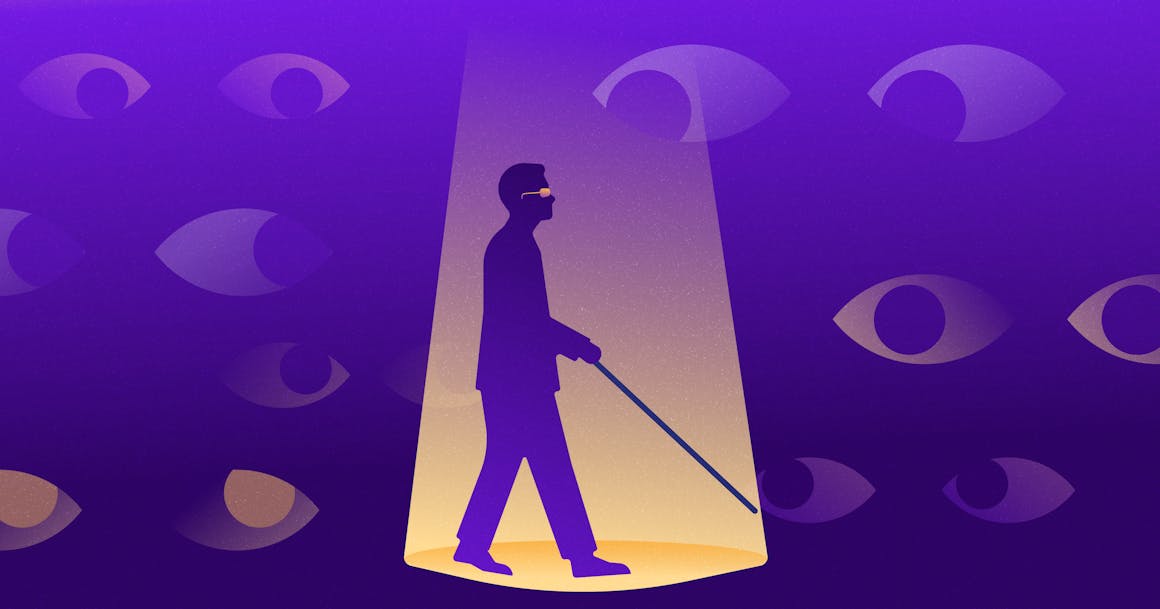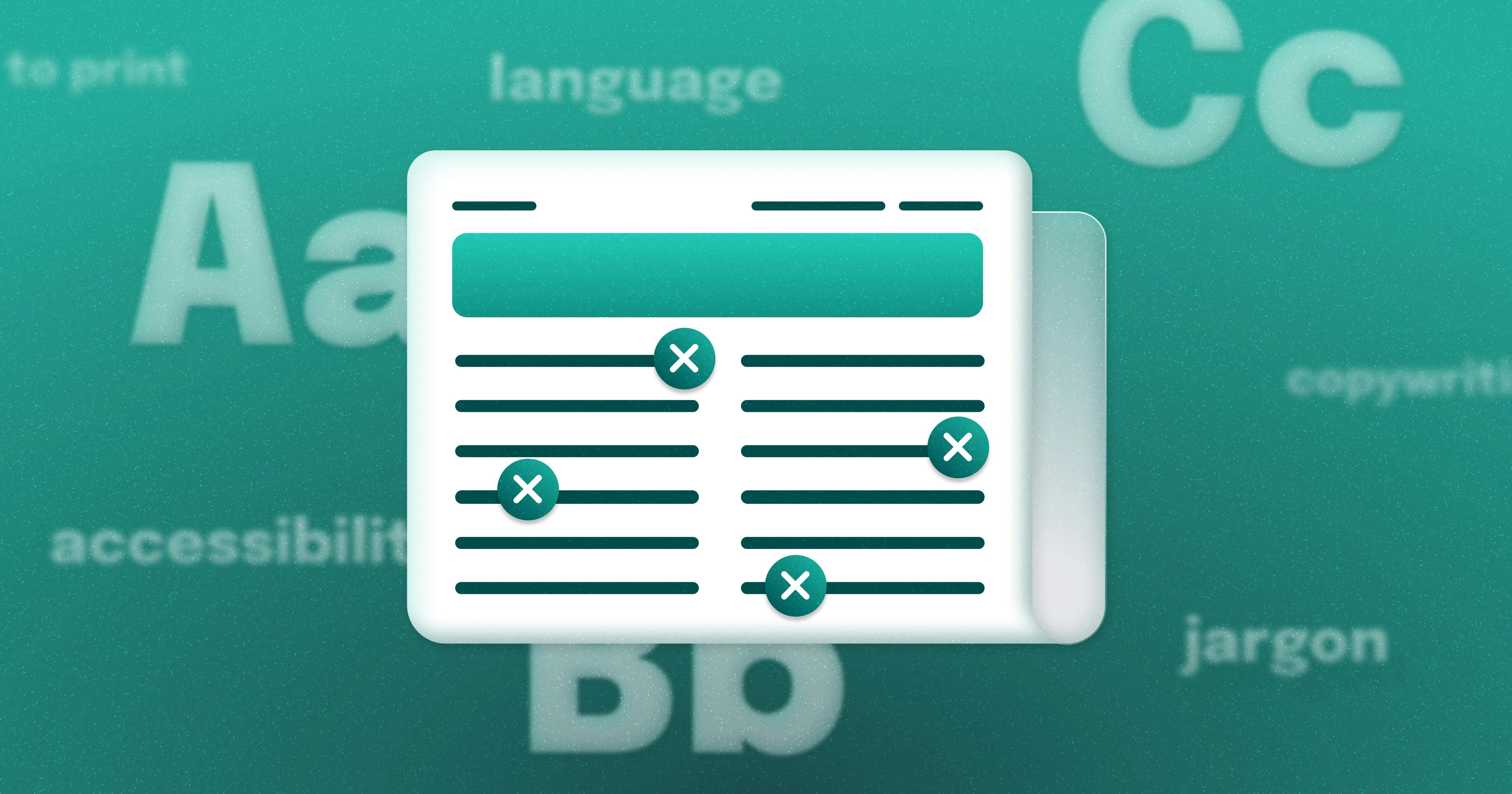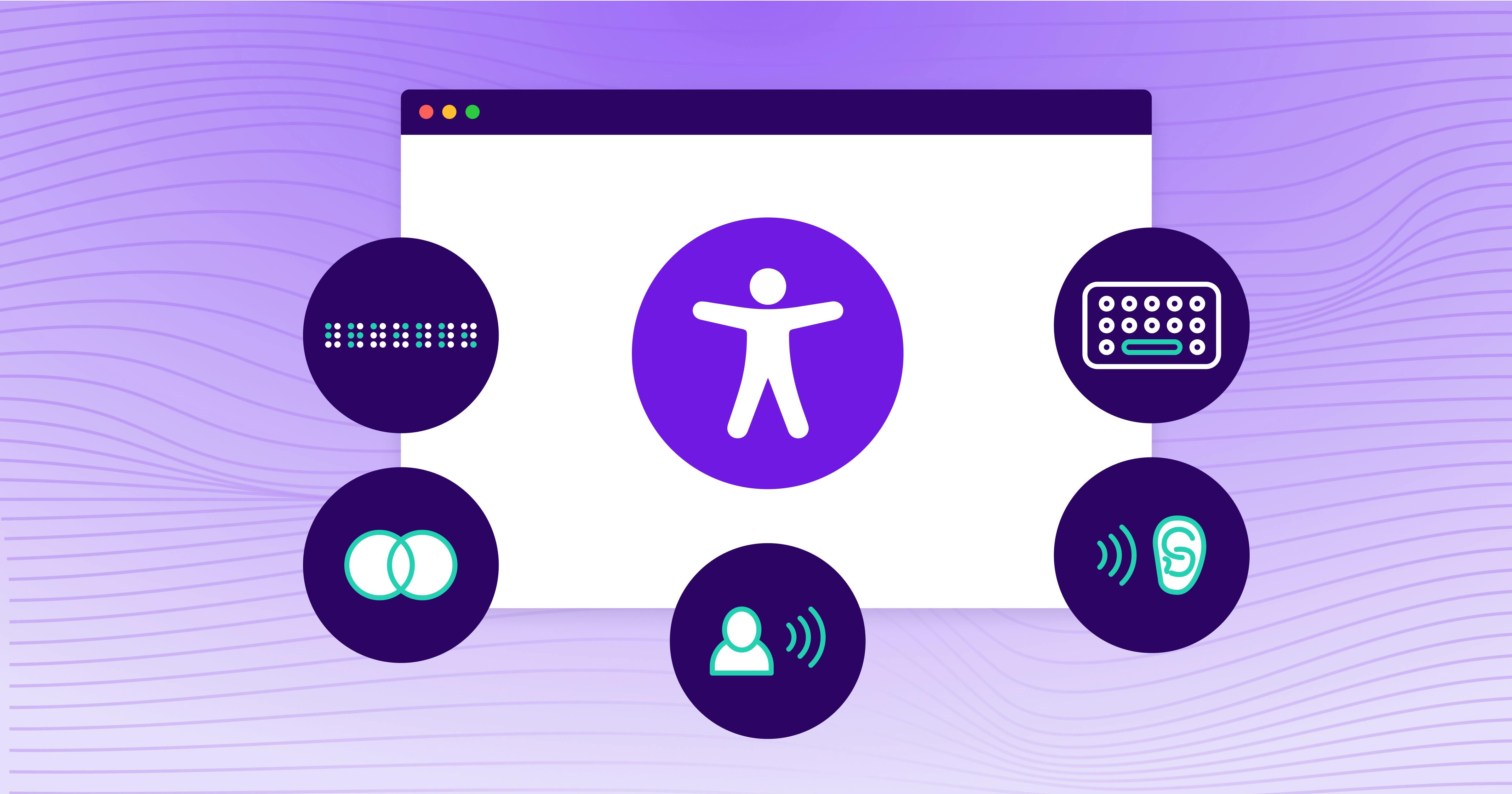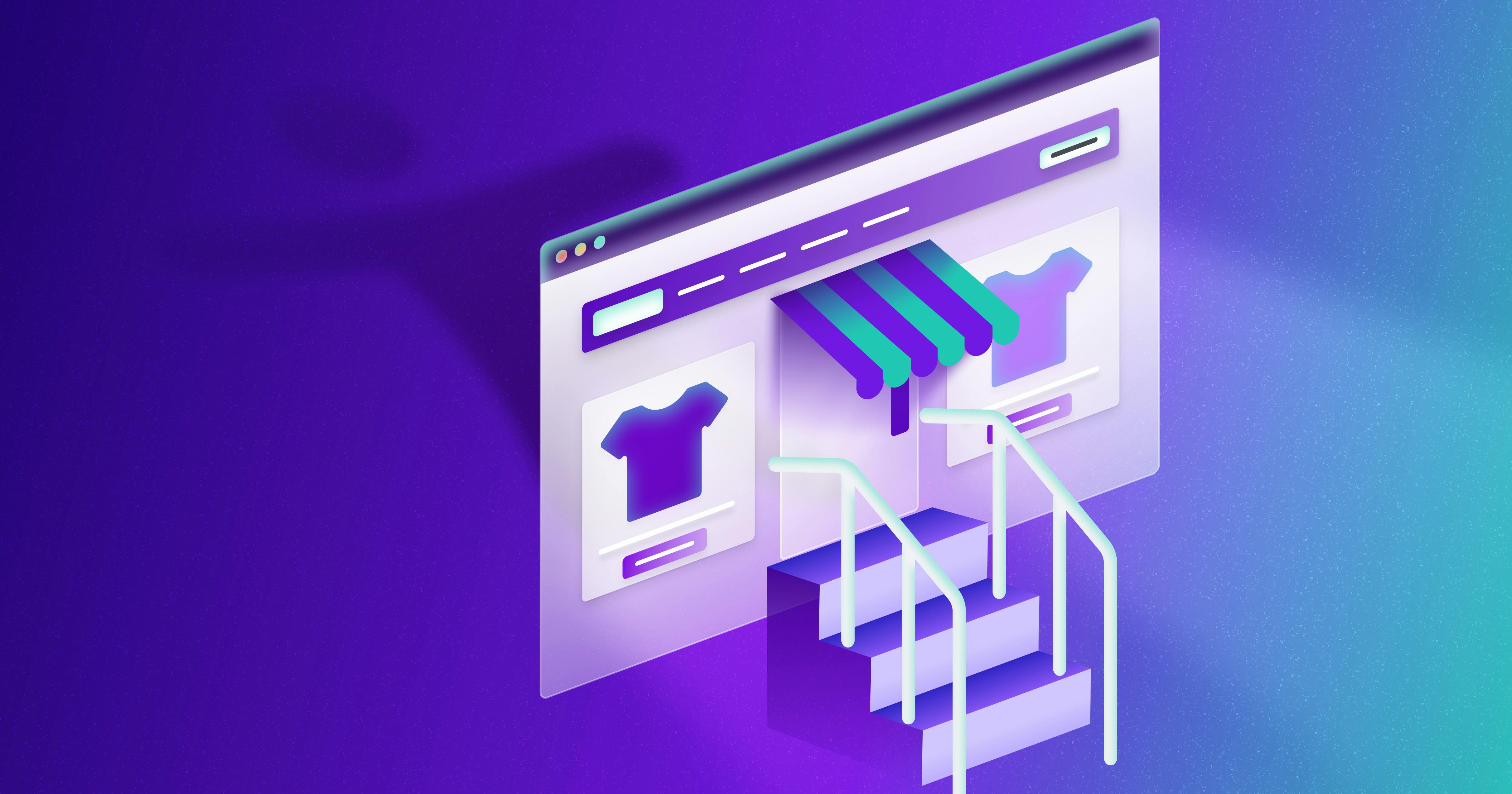An Everyday Experience of Being Blind


Ready to see AudioEye in action?
Watch Demo
In this post, A11iance Advocate Charles Hiser shares what a visit to the mall is like as a person with a visible disability.
I’m walking through a mall, moving my cane back and forth in front of me. I hear a child ask, “What is that?”
I try moving past someone walking slower than me, but as my cane finds his foot, he jumps to the side in startled apology.
While finding a safe path through the tangle of tables and chairs of the food court, an older woman scrambles from her seat to slide a chair out of my way.
These interactions have little impact on me, and my responses are so ingrained that, for this post, I had to ask someone to follow me and point them out later.
For a “normal” person, or a person with invisible disabilities, there are no stares or random moments of educating and advocating. For me, the tool that keeps me safe — my cane — also attracts curiosity, apprehension, and even fear.
In this post, I’ll take you through a recent visit to a mall, to demonstrate experiences I have on a daily basis.
Navigating the Crowd
On this particular day, I’m with a friend — let’s call her Chloe — who drove us to the mall. If I had come on my own, I would have used a rideshare service or public transportation.
Guiding me is easy. Chloe permits me to put my hand on her shoulder as we walk. She walks normally, stepping up curbs and stairs at the same pace we use for traversing flat surfaces. I use a light grip in case I need to let go, or she needs to move away quickly.
Because Chloe is experienced with me, our body language is more communicative through the contact of my hand than I might find in another person. I should note that the best practice for guiding a blind person, or sighted guide as it is usually referred to, is to offer your elbow as a contact point. The arm is flexible and can be used to indicate turns more easily than if a blind person is taking cues from your center of mass.
In this case, I use Chloe’s shoulder because she is much shorter than me. Once inside, I let go and she drops back into an observer’s position.Chloe is looking for times when I might stop, look confused, or glance over my shoulder. Otherwise, she does not intervene, even if I am about to run into something. She trusts that I can figure out any obstacle I come across, and she is correct.
The overlapping echoes of footsteps and voices creates a loud background din that I find both intrusive and useful. Although this noise can prevent me from hearing conversation or softer sounds, it also provides plenty of sound waves for my limited echolocation skills. I can hear large objects, like walls or displays, and when a space narrows or opens up nearby, like the difference between a hallway and the food court. If they are close enough, I can also hear people. Others who are more experienced can detect stairs, tables, railings, and other smaller objects, and have a greater range of distance than I do.
By combining these sounds with the tactile feedback I get from my cane, I can keep myself safe. The mall is pretty busy today, and navigating the crowd takes most of my attention.

Finding My Bearings
Because there are no technologies that grant me quick access to a map, the mall’s directories are useless to me. However, I’ve already planned two destinations for this trip: a store and a restaurant, using their websites ahead of time to see their availability.
The store happens to be an AudioEye customer, and I was able to use my screen reader to browse the site for the information I needed. The restaurant’s website does not use any accessibility techniques, so I’m not sure what to expect.
Our first stop is the store. It’s on the second level of the mall, so I head for an escalator. From previous visits, I know that it’s going to be a bit of a walk.
As I get a better sense of how busy the mall is, I hug the wall so it’s easier to move past people. This also gives my cane a constant point of contact. The escalator’s motor has a distinct sound that I’m listening for, but as I draw closer, a stranger stops and asks if I need help. She means well, but now I’ve lost my concentration. While I let my scripted polite response do the talking, I try to reacquire the sound of the motor. After a moment, she seems to continue on her way, but I stay still, listening. Part of me wonders if she is standing just out of my hearing, watching what I will do next.
After re-establishing my bearings, I continue on. My motion helps me distinguish a stationary sound from the rest of the noise – the motor I am looking for. I find the correct escalator by checking the direction of travel of the railing, step on, and make it to the top with no issue.
I find the store I’m looking for by the style of music they play, enter, and begin moving through the narrow walking space. This layout is not wheelchair accessible, and offers plenty of obstacles I could accidentally knock over. Even with a professionally trained service animal, I have had trouble in this store in the past. I stop and signal Chloe to act as a guide again; not because I can’t walk through the store, but because it will be smoother and less embarrassing if we do this together.
It takes a couple of minutes to have our first interaction with an employee, which is normal enough. Another employee approaches a minute later, listening as Chloe describes chokers she is eyeing to me. The second employee comments on one of Chloe’s descriptions, then makes a point of telling me which side of me they are about to pass me on before moving on.
A few minutes later, we leave the store without buying anything. The shirt I was looking for turned out not to be in stock after all.

A Teaching Moment, When I Just Want To Eat
Back outside, I find the up escalator again and sweep my cane wider than normal, hoping to find the metal plate of the down escalator. I’m also hoping to not impact a person, or worse, have my cane stepped on and bent or broken. Fortunately, I’m able to find the escalator without incident. I feel the direction of the railing to be sure, and ride down to the first level again.
Chloe is obscured by noise behind me. I have no idea where she is, or if I should wait for her to catch up, but I know she’s familiar with the second destination. With this in mind, I choose to keep going as usual.
Moving back the way I came, I look for a hallway on my right. The mall is a mess of sound and motion that I have no easy way to predict. I prefer crossing busy streets to crossing busy foot traffic spaces. At least intersections are carefully controlled.
However, staying in place won’t get me where I need to go, so I put my back to the wall I am standing against to make sure I am facing the direction I need to go, brace myself for contact from any direction, and set out into the maelstrom.
Later, Chloe told me this is the point when I got the most stares. It’s also the point when I heard the child ask about me. Chloe said his mother pulled him back, not knowing that children are my favorite people to interact with and educate. Their innocent perspective, not yet prejudiced by those around them, offers an unparalleled opportunity to make a good impression. But not today.
A short walk outside poses no challenge, and Chloe meets me at the restaurant a moment later. After we’re seated, I bring up my inability to use the website and ask for either a Braille menu or an accessible digital copy, tapping my phone as I talk. I assume our waiter won’t know anything about accessibility, and indeed, he seems confused about the best way to handle the situation.
I ask how I’m supposed to choose from the extensive selection of sushi rolls, and he tentatively offers to read them to me. I made this comment more to drive home the importance of accessibility, and ask Chloe to read them instead. She agrees, and the rest of our dinner goes swimmingly.
My Everyday Experience
As a person with a visible disability, my life comes with unique challenges. I have become numb to them, I think, through repeated exposure and problem solving. My social scripting has evolved over thousands of hours and interactions. A person who looks normal draws little to no attention, whereas anyone using a tool or technology to access the world will undoubtedly get questions.
By exposing myself here, I hope to normalize the attitude that a disabled individual is a person first, living their life and wanting to do all of the normal things that the rest of society takes for granted. As much as I enjoy advocacy, sometimes I just want to eat some sushi with a friend.
More From the A11iance
Want to know more about AudioEye's A11iance community? Read the latest posts from our A11iance Advocates or learn how they help AudioEye test websites.
Ready to see AudioEye in action?
Watch Demo
Ready to test your website for accessibility?
Share post
Topics:
Keep Reading

Newsletter Best Practices for Screen Reader Use
Newsletters are a common tool used in marketing teams. Discover how to make these content types more accessible for individuals with disabilities from AudioEye A11iance Member Jessica Phillips.
community
March 27, 2025

Types of Assistive Technology Tools
Learn about the different assistive technologies that people with disabilities use to browse your website and how you can increase compatibility with them.
community
February 08, 2025

What It’s Like to Shop Online When You’re Blind
Online shopping is often frustrating and inaccessible for blind users, but accessibility fosters confidence and loyalty.
community
January 21, 2025
